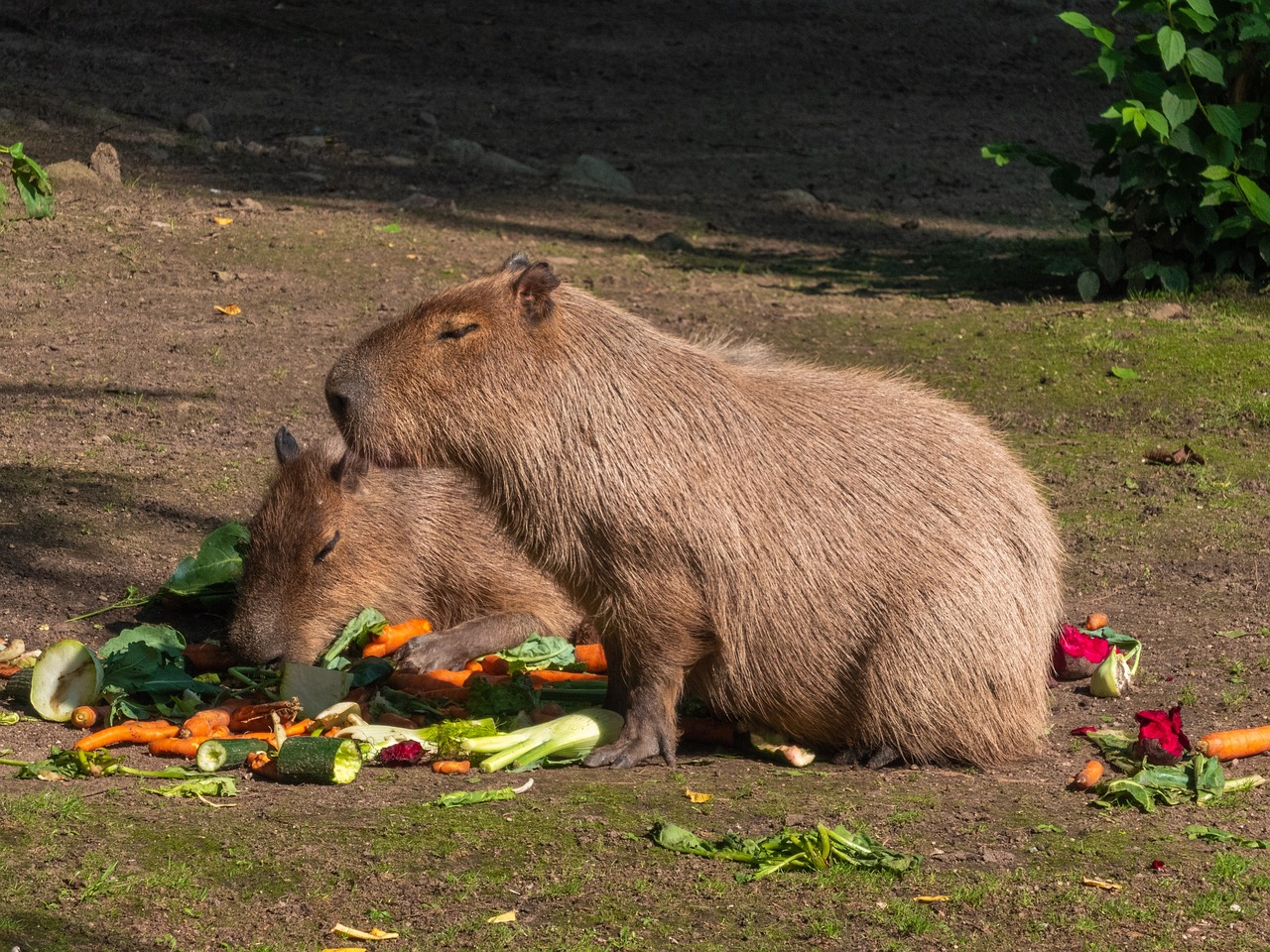Physical Address
304 North Cardinal St.
Dorchester Center, MA 02124
Physical Address
304 North Cardinal St.
Dorchester Center, MA 02124


Capybaras, the world’s largest rodents, are celebrated for their gentle and sociable demeanor. Originating from South America, these semi-aquatic mammals have captivated the hearts of many, not only due to their size but also their distinctive dietary habits. This comprehensive guide delves into the captivating realm of capybaras’ food, exploring their natural diet, nutritional needs, and the challenges they encounter in captivity.
Capybaras, being herbivores, predominantly consume a diverse array of plant materials in the wild. Their diet includes grasses, aquatic plants, fruits, and tree bark. These semi-aquatic creatures are adept at navigating near bodies of water, allowing them easy access to aquatic plants and a means of evading predators. Understanding their natural diet becomes pivotal for ensuring optimal nutrition in captivity.
Grasses and Aquatic Plants
Grasses: At the core of a capybara’s diet are various grasses in their natural habitat, providing essential fiber and nutrients crucial for digestive health.
Aquatic Plants: Capybaras, skilled swimmers, often feed on aquatic plants like water hyacinths and water lettuce, which offer diverse nutrients and contribute to their hydration needs.
Fruits and Vegetables
Fruits: Capybaras exhibit a preference for fruits such as melons, berries, and citrus fruits. These not only supply natural sugars for energy but also deliver additional vitamins and minerals.
Vegetables: Leafy greens, carrots, and other vegetables play a vital role in a capybara’s diet, providing essential vitamins and minerals for overall health.
Tree Bark and Wood
Dental Health: To prevent overgrowth of continuously growing teeth, capybaras engage in chewing on tree bark and wood, a natural behavior crucial for maintaining dental health.
Understanding the nutritional requirements of capybaras is paramount for their well-being in captivity. Proper nutrition is pivotal in maintaining health, preventing diseases, and promoting longevity.
Fiber
Importance of Fiber: Capybaras require a high-fiber diet to support their digestive system, aiding in gut motility, preventing constipation, and maintaining a healthy microbial balance.
Sources of Fiber: Grasses, hay, and other fibrous plant materials serve as excellent sources of fiber, mirroring their natural feeding behavior.
Protein
Adequate Protein Intake: Despite being herbivores, capybaras need a moderate amount of protein to support muscle maintenance and growth. Including legumes, seeds, and certain vegetables can fulfill their protein requirements.
Vitamins and Minerals
Vitamin C: Similar to guinea pigs, capybaras cannot synthesize vitamin C, making it an essential dietary component. Fruits and vegetables rich in vitamin C, such as citrus fruits and bell peppers, should be incorporated into their diet.
Calcium and Phosphorus: Maintaining an appropriate balance of calcium and phosphorus is crucial for bone health. While capybaras obtain calcium from their natural diet, additional sources may be necessary in captivity.
Caring for capybaras in captivity poses unique challenges, especially in replicating their natural diet. Addressing factors like limited access to certain plants and the risk of nutritional imbalances is vital for the well-being of captive capybaras.
Limited Access to Natural Habitat
Replicating Natural Conditions: Creating an environment resembling the capybara’s natural habitat encourages natural behaviors and provides access to a diverse range of food sources.
Providing a Varied Diet: While replicating the wild diet may be challenging, efforts should be made to offer a well-rounded diet that includes various grasses, vegetables, and fruits.
Dental Health Concerns
Overgrown Teeth: Capybaras in captivity may struggle with maintaining proper dental health. Owners should provide suitable objects for gnawing, such as untreated wood, to prevent overgrown teeth.
Nutritional Imbalances
Commercial Diets: While commercial rodent pellets may be an option, they should not be the sole source of nutrition. Supplementing with fresh fruits, vegetables, and other natural foods is crucial to prevent nutritional imbalances.
Ensuring the health and well-being of capybaras in captivity involves adopting proper feeding practices and adhering to specific guidelines.
Monitoring Food Intake
Individual Variability: Capybaras may have varying preferences and nutritional needs. Monitoring each individual’s food intake is crucial to identify signs of dietary deficiencies or excesses.
Observation: Regularly observing capybaras’ behavior during feeding provides valuable insights into their health. Changes in appetite, weight, or behavior may indicate potential health issues.
Consultation with Veterinarians
Veterinary Care: Regular veterinary check-ups are crucial for capybara health. Owners should consult with veterinarians knowledgeable about exotic animal care to address any dietary concerns or health issues promptly.
Enrichment Activities
Mimicking Natural Behaviors: Enrichment activities, such as providing opportunities for foraging and gnawing, replicate capybara’s natural behaviors, contributing to their physical and mental well-being.
Social Feeding: Capybaras being social animals, encouraging group feeding promotes social interactions and reduces stress.
Capybaras, with their gentle disposition and unique lifestyle, present both challenges and rewards for those caring for them. Understanding their natural diet, nutritional needs, and the challenges they face in captivity is crucial for providing optimal care. By replicating their natural environment as closely as possible and paying attention to their dietary requirements, capybara owners can ensure the health and happiness of these extraordinary rodents in domestic settings.